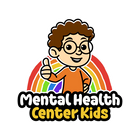While it’s no secret that exercise boosts fitness and is a popular tool among adults for maintaining physical health—a topic that isn’t always discussed is physical activity and mental health for kids.

The Mental Health Benefits of Physical Activity for Children
Exercise is not just about building strength.
Studies have shown a connection between exercise and mood for kids and teens. When kids and teens exercise regularly, it can help them feel less depressed and anxious.
For example, a study involving nearly 2 million participants aged 10-11 years provides evidence that physical activity, particularly cardiorespiratory fitness, muscular endurance, and muscular power, are associated with lower long-term risks of mental disorders in children and teens.
In another study, it was found that after 12 weeks of regular fitness training, teenagers slept better in both quantity and quality. Sleep is incredibly important for maintaining a stable and positive mood, and making more thoughtful choices.

So, How Much Physical Activity Do Kids and Teens Need?
The CDC recommends 60 minutes or more of moderate-to-vigorous physical activity daily for kids aged 6-17.
As a parent or caregiver, you can create opportunities for physical activity without affecting their academic responsibilities. (Yes, we know this is especially important for older kids with increasing school demands.)
7 Ways to Use Physical Activity to Support Mental Health in Kids
I would recommend the following:
-
Use break time for movement. Take breaks during study sessions to do some stretching, jumping jacks, or static exercises.
-
Involve friends and family. Organize active playdates or neighborhood games. Encourage your child to invite friends over for outdoor activities like tag, hide-and-seek, or obstacle courses.
-
Engage in formal activities. Sign your child up for a sports club, which also gives them an opportunity to develop sportsmanship and other important social skills.
-
Screen time limits. Limit screen time to make room for physical activities.
-
Incorporate movement into everyday tasks. Turn household chores into fun physical challenges, like racing to put away laundry or having a dance party while cleaning.
-
Encourage a mixture of different activities. Consider a variety of environments and activities such as a nature walk, swimming, or playing outdoor games like soccer, frisbee, or badminton. Try new activities like kayaking, hiking, or geocaching to make exercise feel more like an adventure.
-
Create a reward system. Set up a physical activity chart or use a fitness tracker to monitor progress. Offer small incentives for reaching activity goals.
Parents, be sure to set a good example by engaging in physical activity yourself. Or better yet, be active together! Physical activity and mental health for kids are interconnected, so if they see you prioritizing exercise and movement, they’re more likely to follow your lead.
*This article was originally published in our email newsletter on March 25, 2025.























































